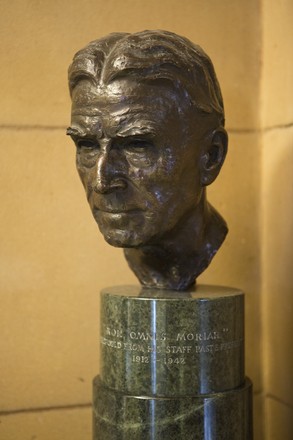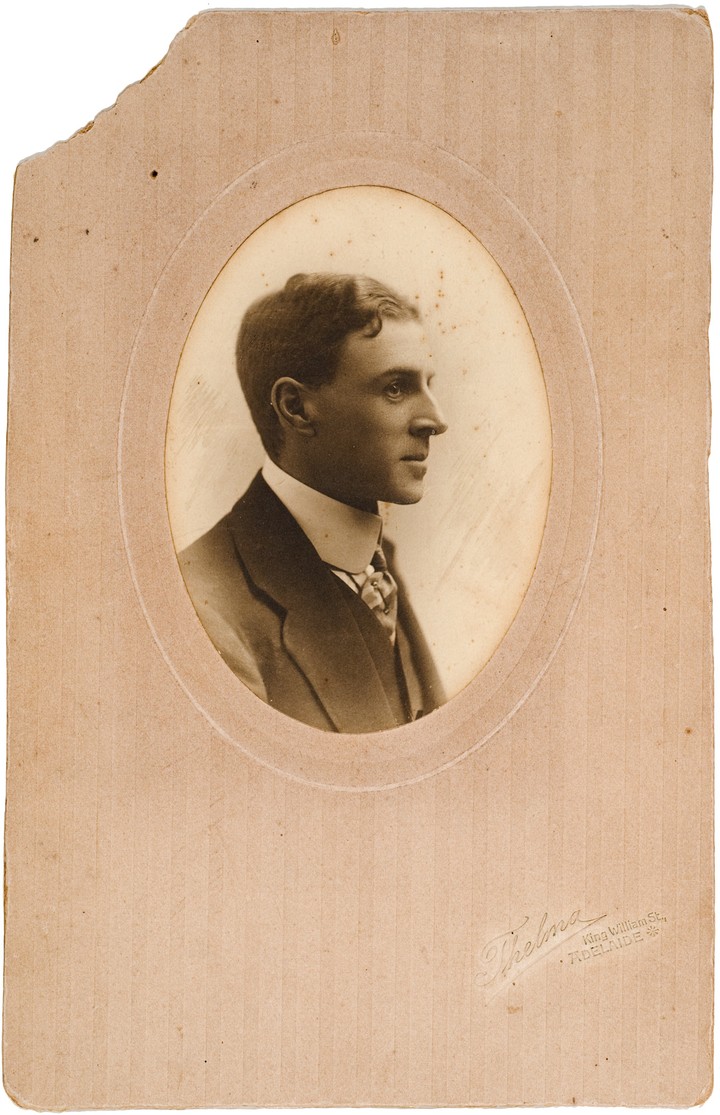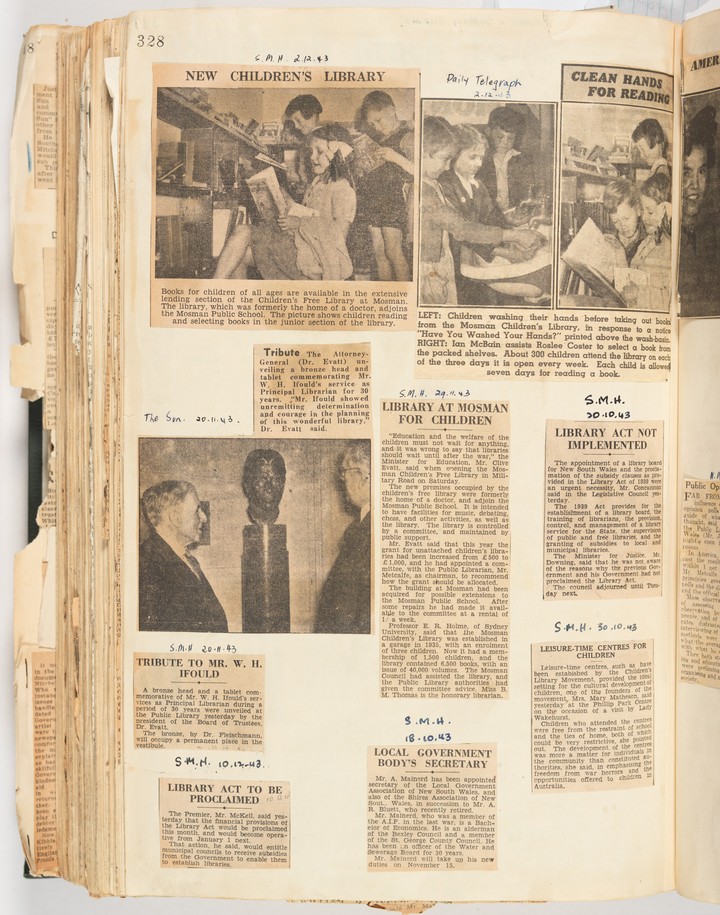Portrait bust of William Ifould
Bronze on marble stand
Commissioned 1945
Principal librarian from 1912 to 1942, William Herbert Ifould was the driving force behind the design and construction of the Public Library. His passion, determination and fervent attention to detail at times brought him into conflict with the government architects but kept the project going despite numerous setbacks. Ifould also played an important role in ensuring that only the best designers and craftspeople were assigned to the job, and saw the Library’s collection used to inspire many of the architectural and design elements of the building.
With great enthusiasm and relentless attention to detail, Ifould was instrumental in forging a new intellectual direction for the Library. His priority was to convert the Public Library into a ‘working Library’ that was accessible to a broader public, not just to researchers and scholars. He also sought to make the Library the leading institution in the Commonwealth for collecting records and documents relating to Australian history.
This portrait bust was commissioned by Ifould, and was presented to him as a retirement gift by Library staff. The sculptor, Arthur Fleischmann, also created a number of other artworks and design features for the Library.
Crackling with energy
William Ifould was a man of enormous energy and wide-ranging interests. Described by the Sunday Times in 1928 as ‘a spark plug: not very large but immensely alive … and crackling with energetic opinions’,* he was well travelled, well read (not surprisingly) and a keen sportsman, including in amateur steeplechase riding, tennis, golf and trout fishing. Ifould also had a lifelong interest in horticulture. He founded the National Rose Society in 1912, wrote a gardening column in the Evening News for many years, and in his spare time developed an orange orchard at Waikere in South Australia and oversaw the ‘beautification’ of Elanora Golf Course. He was passionate about architecture and the arts, and for 39 years served as a trustee on the Board of the Art Gallery of NSW.
Footnotes
* D J Jones, A source of Inspiration and Delight, 1988, p 98
War and peace
With the outbreak of World War I, all non-essential public works projects were put on hold. Ifould’s ambitious plans for a new National Library across the road from the Mitchell on the corner of Bent and Macquarie streets to replace ‘the shame’ of the Public Library’s building then in use were dashed. Following the war, demand for the Library’s services surged, adding further to the Library’s woes. A new space was urgently needed. Despite government hostility, Ifould tenaciously pressed on and rallied the media to support his campaign. In July 1934, in the midst of the Great Depression, the state Parliament passed the National Library Building Amendment Act authorising construction of the building.
‘Good prices for good material’
William Ifould was a person of vision. In 1919 he initiated a collecting drive to acquire the personal diaries of servicemen and women from all ranks and theatres. He insisted that the diaries acquired be first-hand accounts of the experiences of soldiers. Ifould did not want records compiled later, from reminiscences or edited versions of accounts made in battle.



 Back to list
Back to list
